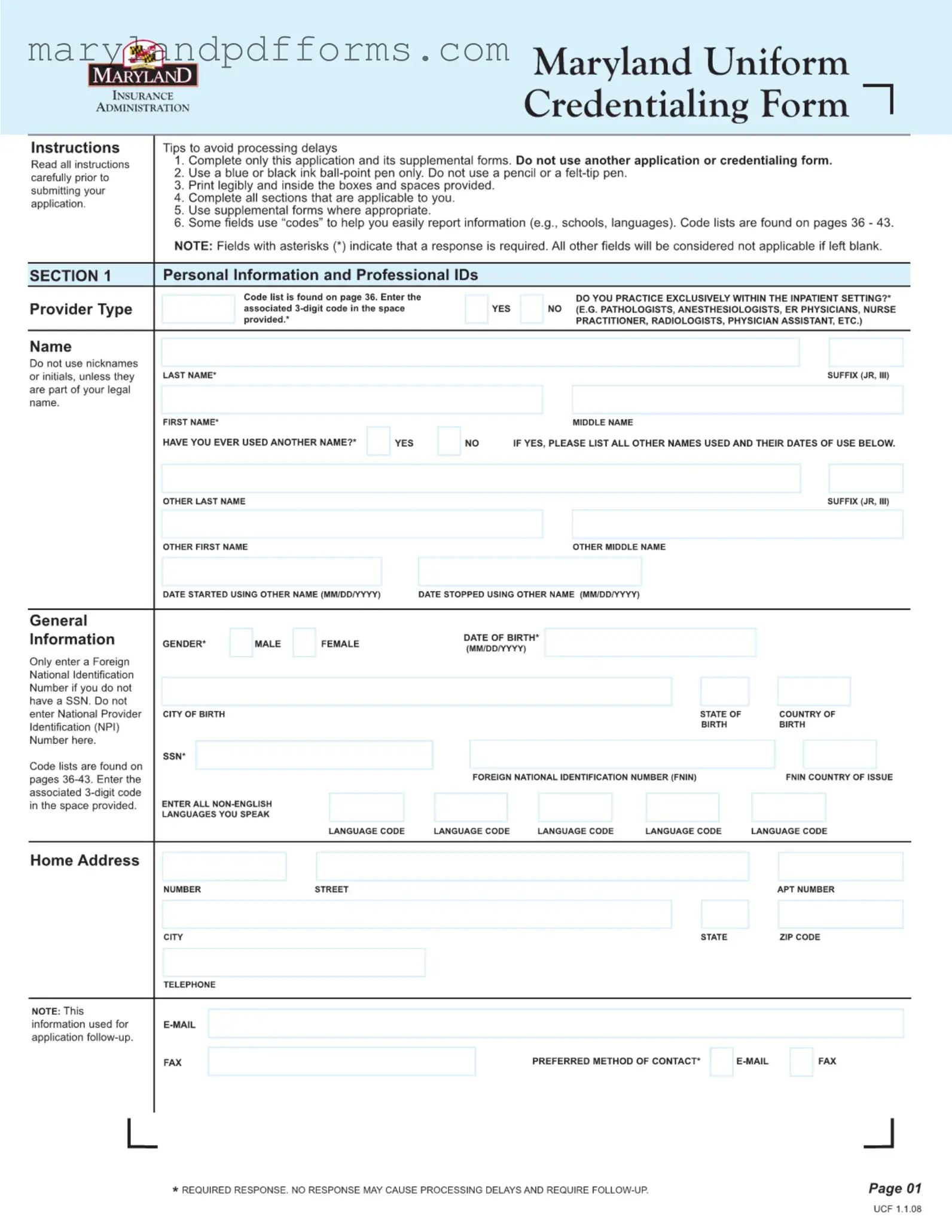The Maryland Uniform Credentialing Form is a standardized application used by healthcare providers in Maryland to apply for various licenses and credentials. It collects essential information about the provider's personal details, professional qualifications, education, and training. This form is crucial for ensuring that healthcare professionals meet the necessary standards to practice in the state.
This form is required for healthcare providers seeking licensure in Maryland. This includes, but is not limited to, physicians, nurse practitioners, physician assistants, and other medical professionals. If you plan to practice in Maryland, completing this form accurately is essential for your credentialing process.
The Maryland Uniform Credentialing Form consists of several key sections:
-
Personal Information and Professional IDs:
This section collects your name, contact information, and any relevant identification numbers, such as DEA and NPI numbers.
-
Education and Training:
Here, you'll provide details about your educational background, including undergraduate and professional schools attended, as well as any post-graduate training programs.
-
Professional Experience:
This section requires you to outline your work history and any gaps in your training or experience.
Completing each section thoroughly is crucial to avoid delays in processing your application.
What should I do if I have used another name?
If you have ever used another name, you must provide that information on the form. There is a specific section dedicated to this. You'll need to list all other names used along with the dates you used them. This helps ensure that your credentials can be accurately verified against all records.
Yes, there are several important instructions to follow:
-
Use only blue or black ink and print legibly.
-
Complete all applicable sections; fields marked with an asterisk (*) are mandatory.
-
Utilize the provided code lists to fill in specific fields, such as education and professional IDs.
-
Do not leave any required fields blank, as this may lead to processing delays.
Following these instructions carefully will help ensure your application is processed smoothly.
What happens if I leave required fields blank?
Leaving required fields blank can significantly delay the processing of your application. If a field is marked with an asterisk (*), it is essential to provide a response. If you do not have information for a required field, it is advisable to indicate that it is not applicable rather than leaving it blank. This helps the reviewing authority understand your situation better and reduces the chances of needing follow-up communication.
